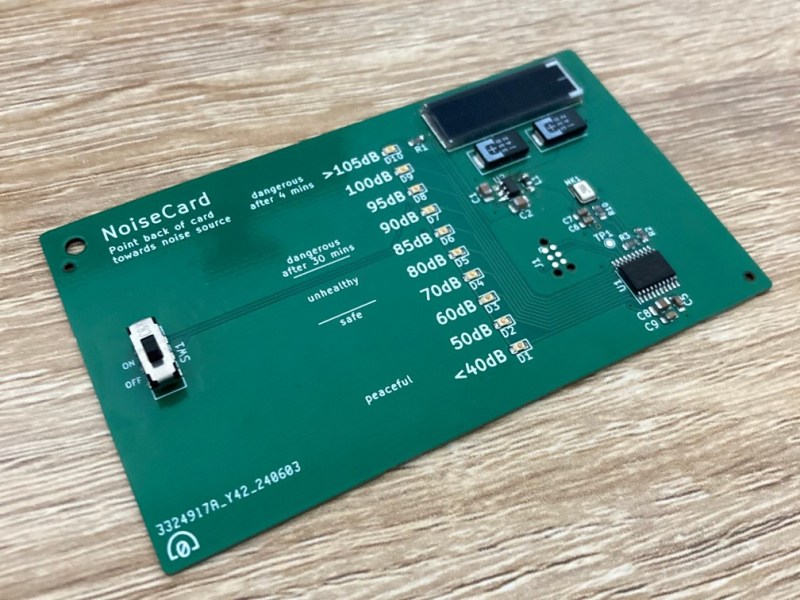Let’s face it: even with the rise of the electric car, the world is a noisy place. And it seems like it has only gotten worse in recent years. But how can we easily quantify the noise around us and know whether it is considered an unhealthy decibel level?
That is where the NoiseCard comes in. This solar-powered solution can go anywhere from the regrettable open office plan to the busy street, thanks to a couple of 330 µF capacitors. It’s based on the low-power STM32G031J6 and uses a MEMS microphone to pick up sound from the back of the card, which the code is optimized for. Meanwhile, the LEDs on the front indicate the ambient noise level, ranging from a quiet 40 dB and under to an ear-splitting 105 dB or greater.
When it comes to building something the size of a business card, every component is under scrutiny for size and usefulness. So even the LEDs are optimized for brightness and low power consumption. Be sure to check it out in action after the break in various environments.

















I’m curious how you would calibrate something like this.
Grab the spectral response from a calibrated speaker from a known distance. Write the response values to a table in firmware and include them in the calculations. Extra points for temperature and humidity corrections.
There are major challenges with this design, because the microphone is not on any edge of the PCB. It gives this design a very directional pattern and that is going to be a problem.
But. This design still has potential, especially if it is redesigned to get a more unidirectional pattern.
Short answer: borrow a known good sound-pressure-level (SPL) meter, and set it and the meter to be calibrated up very close to each other on some kind of stand, like a mic stand or a camera tripod. Set up a loudspeaker a few meters in front of them, play some pink noise through the speaker, adjust the speaker level to hit a good reference point on the good SPL meter (eg 90 dB* SPL), then adjust the calibration of the other device to just light the 90 dB LED.
This is of course a basic and simplified method, and influenced by many factors, especially where you do the test. Labs would use a large anechoic chamber, but you can get decent accuracy outdoors if the ambient sound level is around 50 dBA or less and your reference noise is around 90 dB SPL.
* The author (Toronto! represent! ;-) ) doesn’t mention whether they are applying any weighting to the reading, so we don’t know if they’re measuring dBC (flat) or dBA (A-weighted response).
https://en.wikipedia.org/wiki/A-weighting
Not arguing against the comments above, not my area of expertise, but I find this an elegant design!
“Nonce verification failed!” when trying to post??